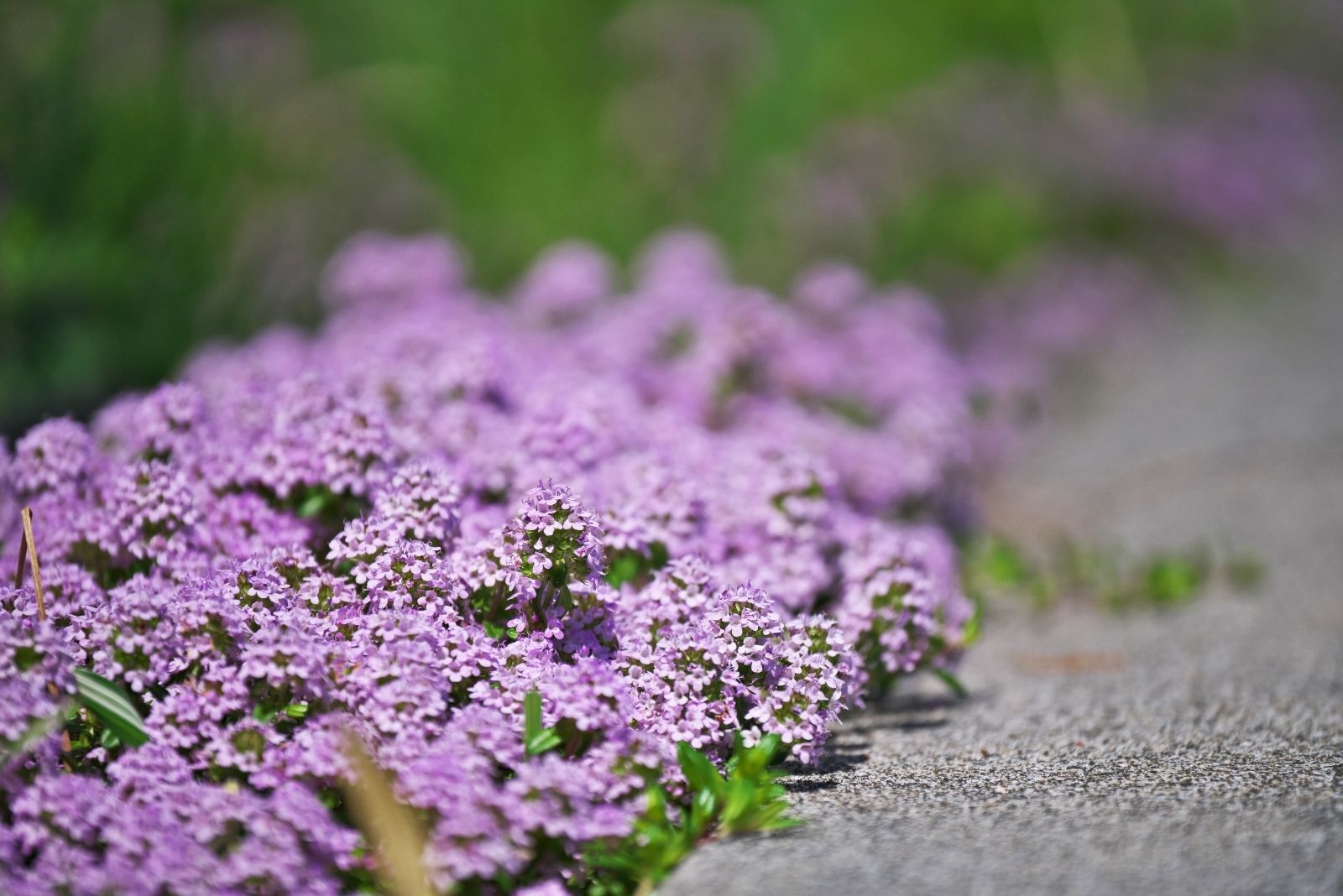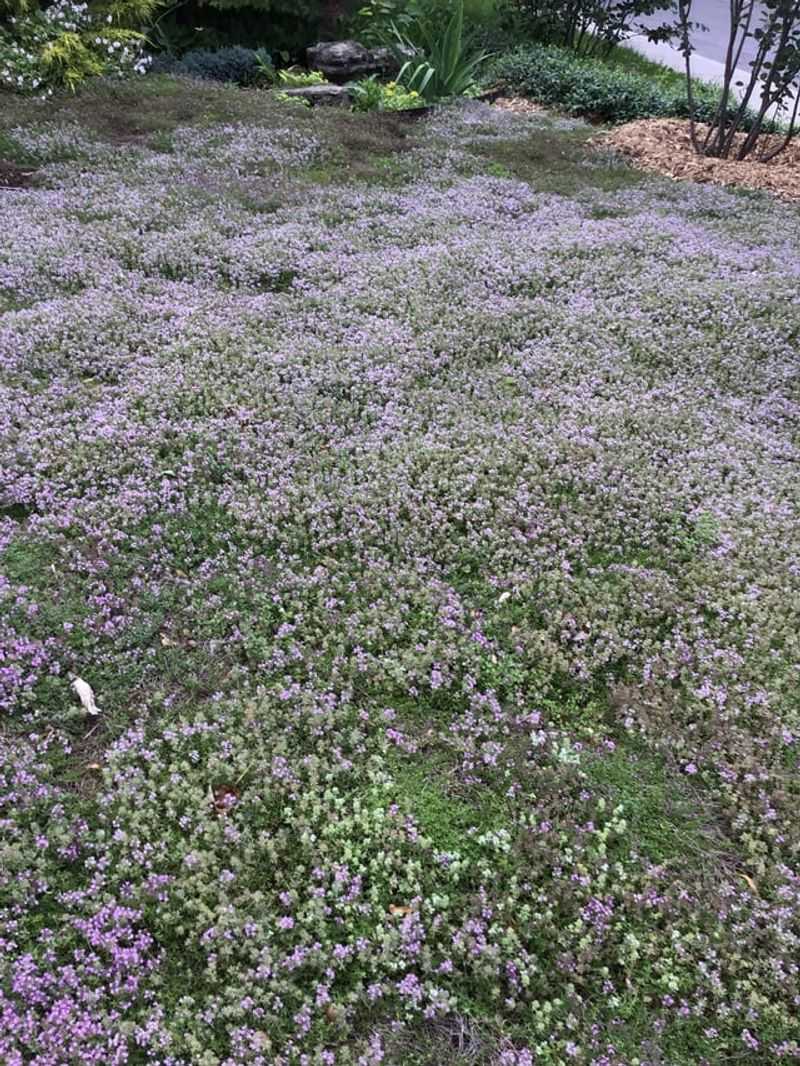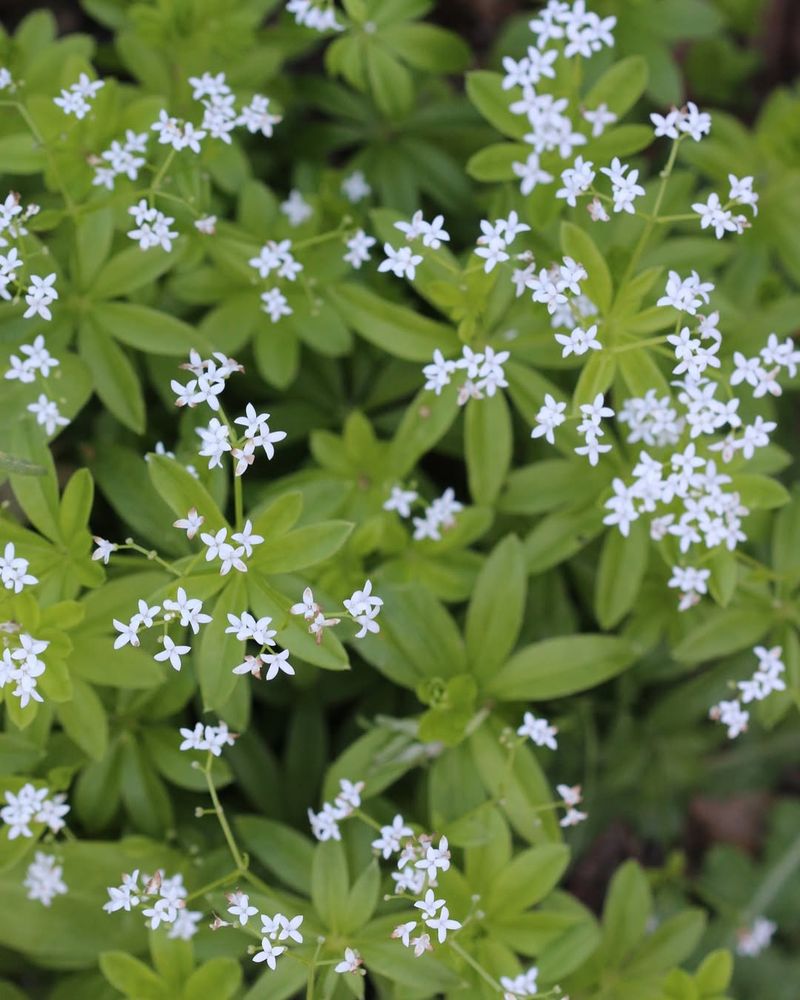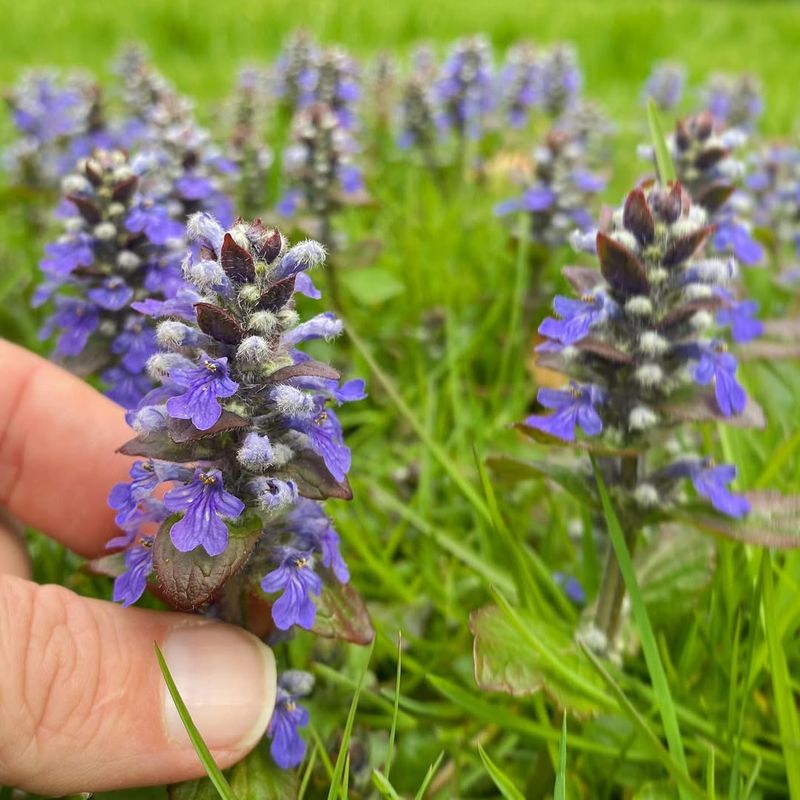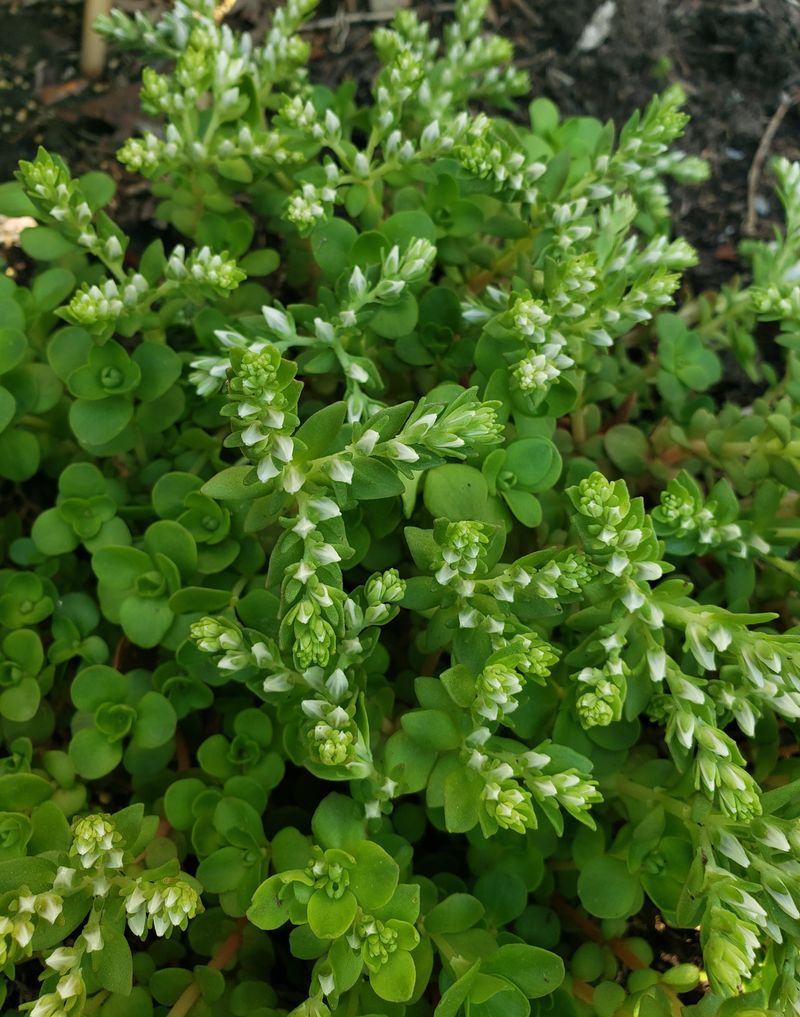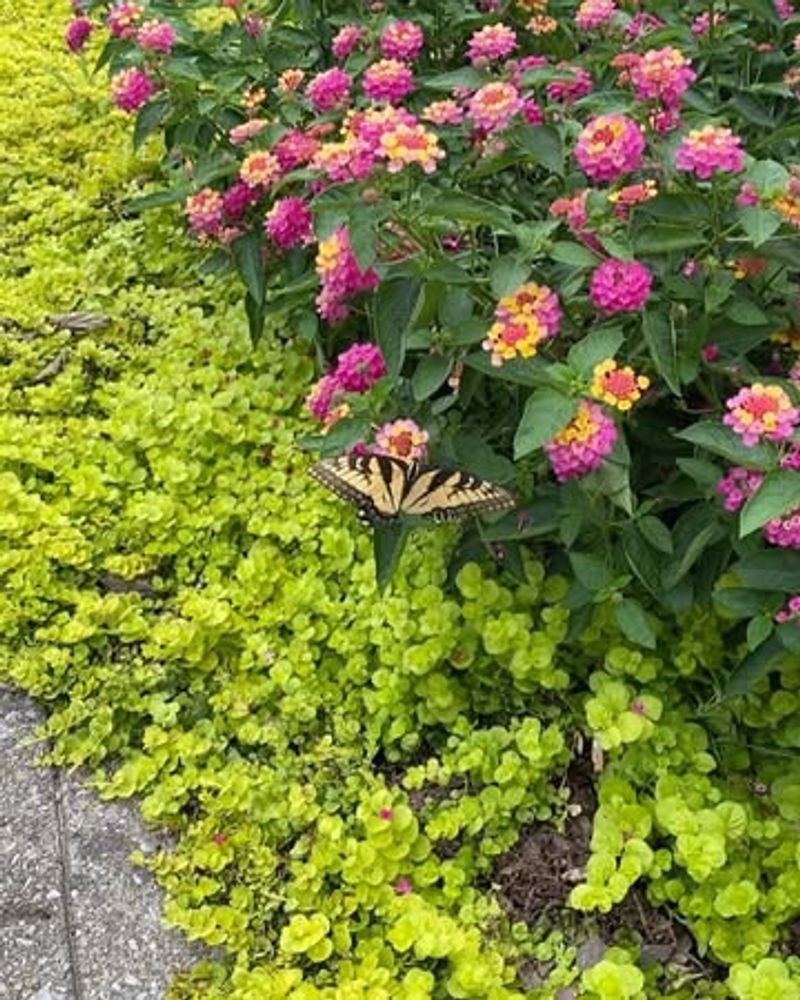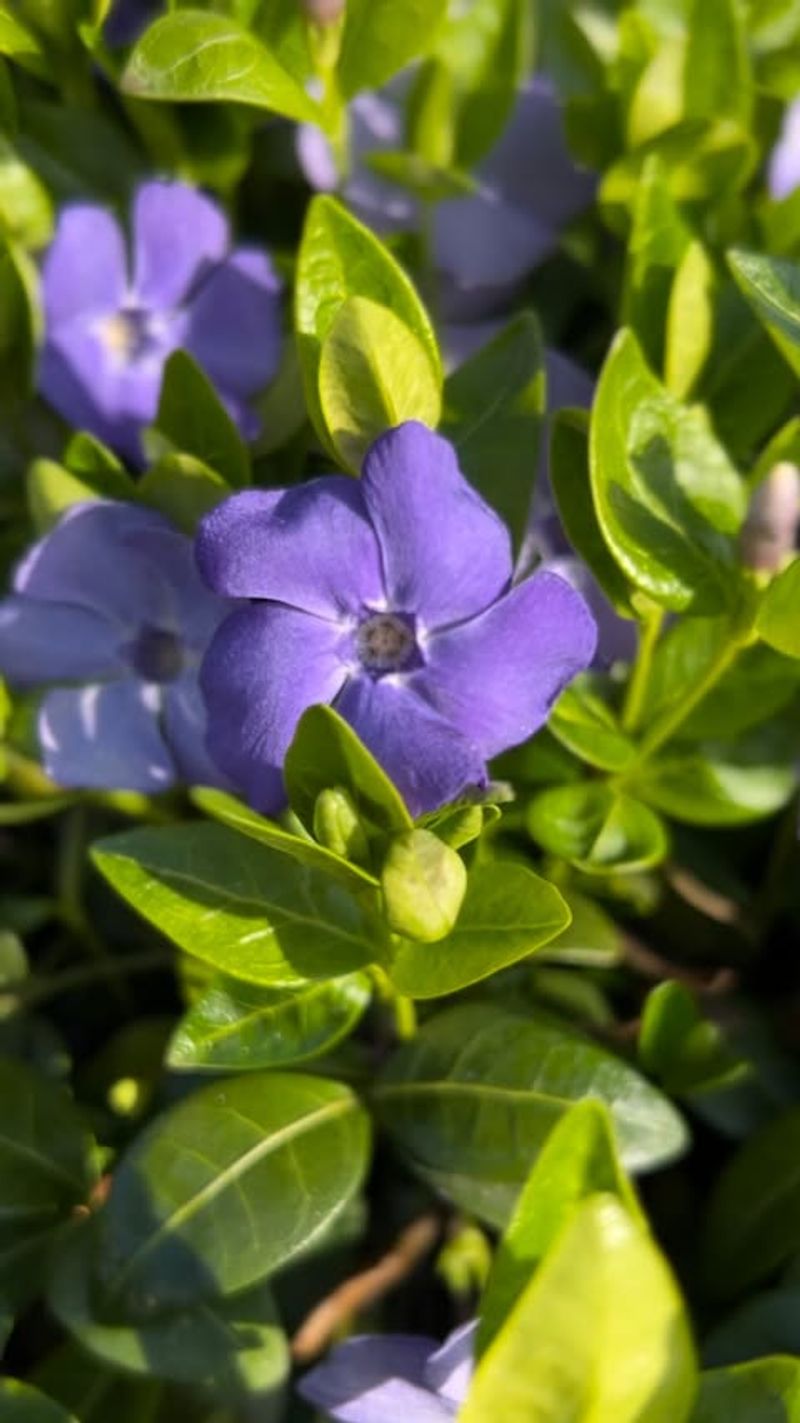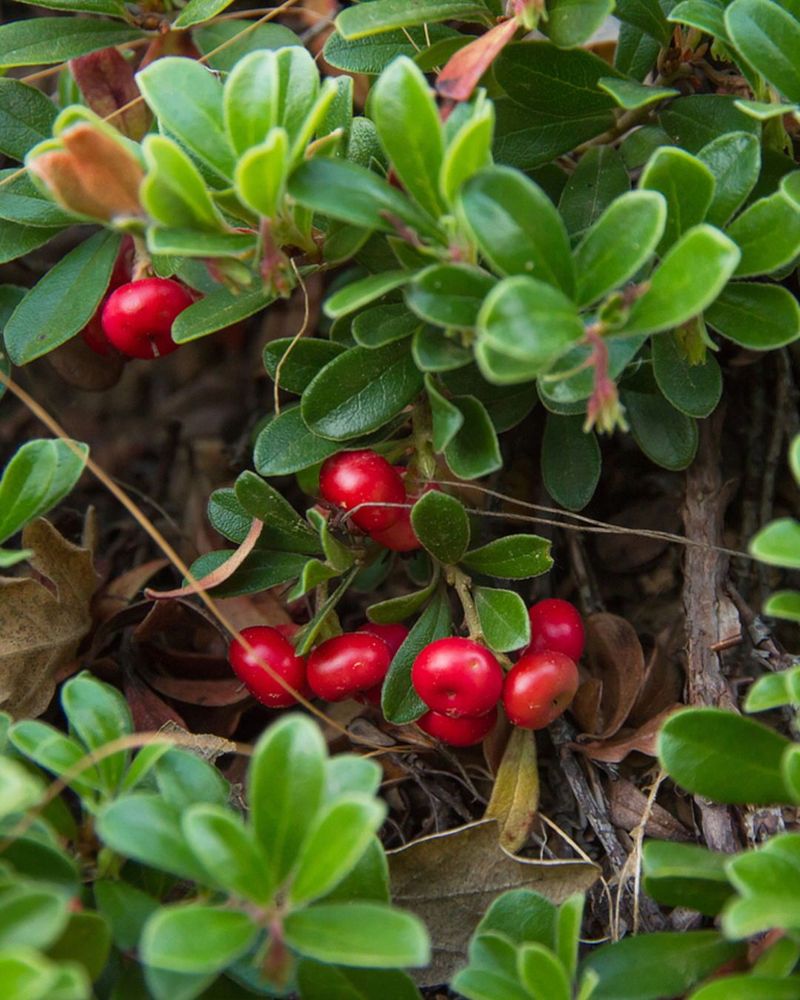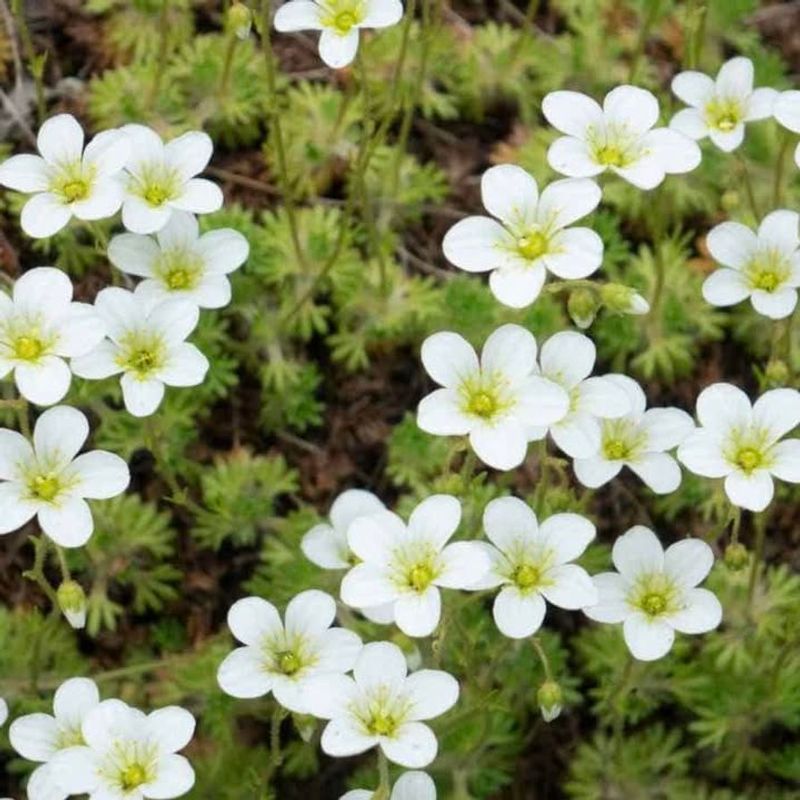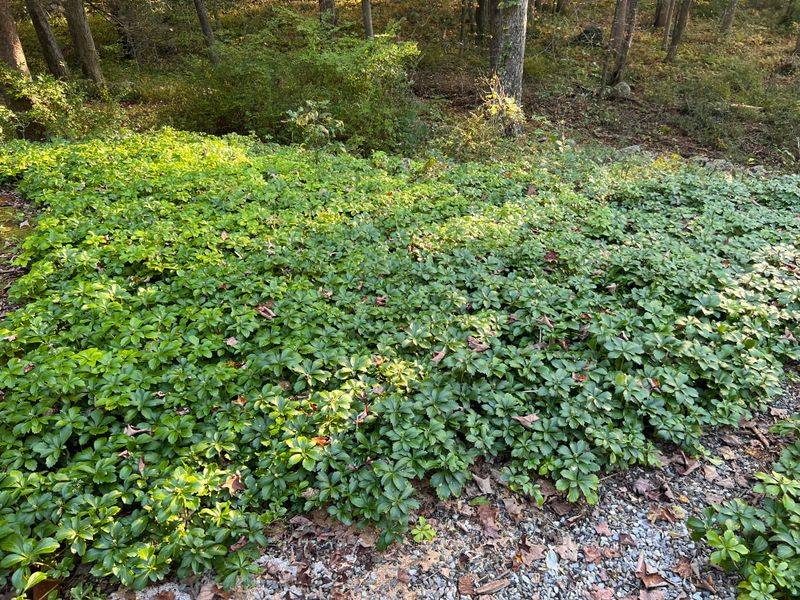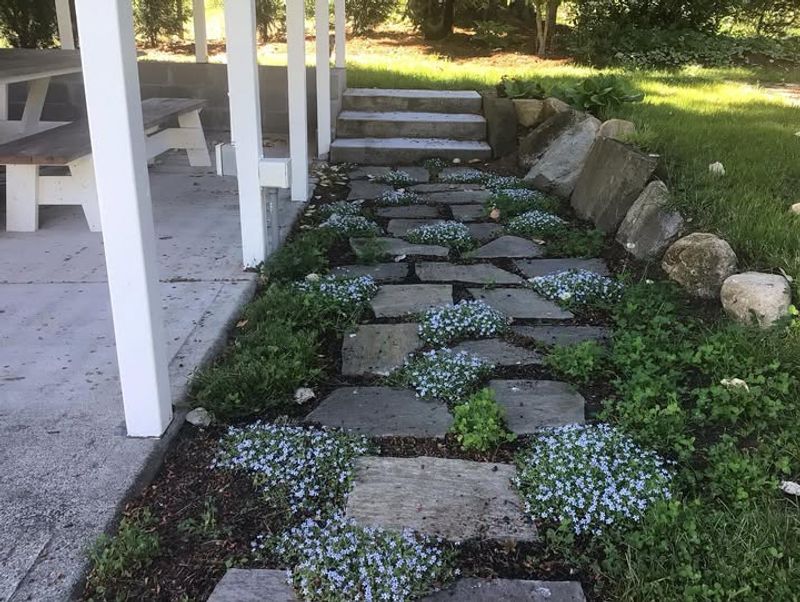Ohio gardeners know the frustration of staring at bare patches in their lawns and garden beds. These empty spaces not only look unappealing but can also invite weeds to take over.
Thankfully, fast-growing ground covers offer a practical solution that transforms those problem areas into functional, attractive parts of your landscape.
1. Creeping Thyme
Walking across a carpet of fragrant herbs beats staring at dirt any day. This low-growing plant spreads quickly across bare areas while releasing a pleasant scent when stepped on. It tolerates foot traffic better than most ground covers, making it ideal for pathways.
In my Ohio garden, I noticed bare patches shrinking once I added this ground cover between stepping stones. The purple or pink blooms appear in late spring, attracting bees and butterflies. Plant in full sun with well-draining soil for best results.
Established plants need minimal watering and handle our unpredictable Ohio weather surprisingly well.
2. Sweet Woodruff
Shady spots under trees often become problematic bare zones where grass refuses to grow. That’s where this shade-loving ground cover shines, spreading steadily to form a dense mat of star-shaped leaves. White flowers emerge in spring, brightening up those dim corners.
I planted it beneath my oak tree three years ago, and it now covers what was once a muddy mess. The foliage stays green throughout the growing season and requires almost no maintenance. It prefers moist, rich soil but adapts to typical Ohio woodland conditions.
Just give it some organic matter when planting.
3. Ajuga (Bugleweed)
Few plants spread as aggressively as this one, which makes it perfect for filling bare spots fast. The glossy foliage comes in various colors, from deep purple to bronze-green, adding visual interest year-round. Blue flower spikes shoot up in spring, creating an eye-catching display.
My neighbor filled her entire side yard with this ground cover in just two seasons. It thrives in both sun and partial shade, making it versatile for different garden spots. Ohio’s clay soil doesn’t bother it much either.
Just water regularly until established, then watch it take off on its own.
4. Sedum
Drought-tolerant plants earn their place in Ohio gardens, especially during our dry summer stretches. These succulent ground covers store water in their fleshy leaves, surviving conditions that would kill most plants. They spread steadily without becoming invasive, filling gaps with interesting textures.
I’ve used several varieties around my rock garden, and they’ve never disappointed. The star-shaped flowers attract pollinators in late summer when many other plants have finished blooming. Plant them in sunny, well-drained spots for best performance.
They even handle our occasional drought periods without extra watering or fussing.
5. Creeping Jenny
Bright chartreuse foliage catches your eye immediately, making this fast-spreading ground cover hard to miss. It works wonderfully along pathways, between pavers, or cascading over retaining walls. Small yellow flowers appear in summer, though the foliage remains the main attraction.
For me, combining this plant with darker-leaved companions created striking contrasts in my front yard. It prefers moist soil and tolerates partial shade, making it suitable for areas that stay damp. Ohio’s spring rains help it establish quickly.
Just keep an eye on it because it can become quite enthusiastic in spreading.
6. Periwinkle (Vinca minor)
Evergreen foliage means year-round coverage, even during Ohio’s gray winter months. This tough ground cover handles shade beautifully while producing periwinkle-blue flowers in spring. It spreads through trailing stems that root wherever they touch soil.
My parents planted this under their mature maples decades ago, and it still looks great with minimal care. The glossy leaves stay attractive through all seasons, providing consistent color. It adapts to various soil types and moisture levels common in Ohio landscapes.
Once established, it chokes out most weeds, saving you hours of maintenance work throughout the year.
7. Bearberry (Arctostaphylos uva-ursi)
Native plants deserve more attention in Ohio gardens, and this one proves why. Small, leathery leaves form a dense mat that turns reddish-bronze in fall, adding seasonal interest. Red berries appear after the pink flowers fade, providing food for birds through winter.
I planted it on a challenging slope where erosion was washing away topsoil. The extensive root system stabilized the area while looking attractive. It prefers acidic soil and full sun, thriving in sandy or rocky spots where other plants struggle.
This ground cover handles our cold winters without any special protection or extra care.
8. Irish Moss
Creating a moss-like carpet without actual moss sounds impossible, but this ground cover delivers exactly that. Tiny leaves form an incredibly dense, cushion-like mat that feels soft underfoot. White flowers dot the green surface in late spring, adding delicate charm.
Between my patio stones, this plant has created a fairy-tale effect that guests always comment on. It prefers consistent moisture and partial shade, making it perfect for those tricky spots under downspouts. Ohio’s humidity actually helps it thrive during summer months.
Just avoid planting it in areas with heavy foot traffic since it’s more delicate than thyme.
9. Pachysandra
Evergreen leaves arranged in whorls create an elegant, formal appearance that suits traditional Ohio landscapes. This shade-loving ground cover spreads through underground rhizomes, gradually filling bare areas beneath trees and shrubs. Small white flowers bloom in spring, though they’re often hidden beneath the foliage.
My grandmother’s entire side yard features this classic ground cover, and it’s looked the same for thirty years. It handles dry shade better than most alternatives, making it valuable for spots under mature trees. Plant in groups for faster coverage.
Just add some compost at planting time to give it a good start in Ohio’s clay.
10. Blue Star Creeper
Tiny blue flowers scattered across fine-textured foliage create a starry effect in spring and summer. This low-growing ground cover tolerates moderate foot traffic, making it useful between stepping stones or in lawn alternatives. It spreads quickly through creeping stems that root as they grow.
I replaced a struggling grass patch with this plant last year, and the transformation amazed me. It stays green longer than grass and requires no mowing or fertilizing. Plant in full sun to partial shade with regular moisture for best results.
For me, combining this with Ajuga filled my toughest bare spots faster than expected in my Ohio yard.

